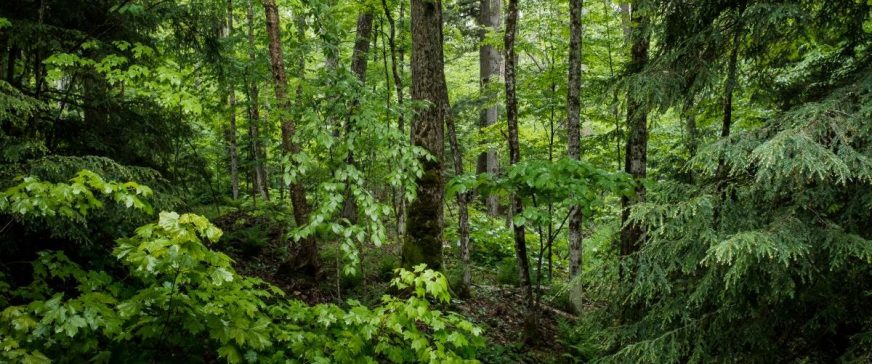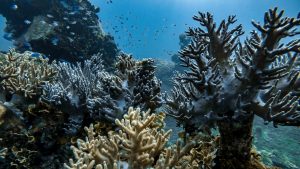- SIWI – Leading expert in water governance
- /
- Latest
- /
- Biodiversity is the basis for our existence, and it’s under threat
Biodiversity is the basis for our existence, and it’s under threat

May 22 is the International Day for Biological Diversity, a celebration with a concerning undertone. Biodiversity is the basis for our existence, but it’s increasingly under threat from destructive land use, climate change, pollution and other factors which impede or destroy it. Lotta Samuelson, Swedish Water House, explains just why we need to focus on biodiversity, from both a landscapes and water perspective.
Why is biodiversity important?
To understand its importance, we must first be clear about what biodiversity is. Biodiversity is a broad concept. It is about diversity in genes, species, and ecosystems. It is vital to the survival of species, plant and animal alike, because the variations we see naturally occurring within species or ecosystems act as an insurance. If circumstances change, e.g. a change in climate making the ecosystem warmer, the most commonly found variety of a species could have problems in coping with this change. In a biodiverse ecosystem, there is a pool of backup resources (varieties in genes and species that are able to adapt to the change) that can jump in and keep doing the same job. Water is key to these processes.
Aquatic ecosystems such as wetlands, estuaries and riparian forests are especially rich with species, and also rich in numbers of individuals within the species, increasing the likelihood of variations within a species. They are also the spawning grounds for many young birds and aquatic species, allowing them to grow and develop before joining the adult flock. This makes these environments and their biodiversity even more important to protect: to ensure generation of new generations of species.
According to the Global Assessment on biodiversity and ecosystem services, we’re currently living in an era of mass extinction of species that could threaten also human existence. The expansion of human activity is an important driver, meaning that for example only 15 per cent of the original forest cover remains intact. This destruction of many natural habitats can also increase the risk of dangerous viruses spreading from animal to people. In 2020, the World Economic Forum’s 2020 Global Risks Report ranked biodiversity loss and ecosystem collapse as one of the top five threats humanity will face in the next ten years.
How is biodiversity linked to climate change?
Biodiversity is threatened when species are not able to adapt fast enough to the warmer climate and the changes in ecosystems and natural processes that follow with it. Changes in the quality and/or quantity of the water as a result of changes in climate put additional stress on the species living in or dependent on the water. Species are adapted to the conditions where they are born and raised. If these change quickly, species risk to die out. But, ecosystems with a high degree of biodiversity are more resilient, since the genetic variety within species, and between species enable the chance that some individual within the species can adapt to the new conditions.
Water parameters such as temperature, salinity, streamflow, food webs, and many more change with climate change – and the species in or by the water are stressed to a varying degree by these changes. The wider the variety of species there are, and the more variations they have within their genes, the higher the chance that some of them will adapt and survive, and continue to fulfil their specific role in the food web, and any other natural processes they are part of.
For example, if we only have one species of carnivorous fish and it dies out, then the grazing fish they feed on will breed and number will increase somewhat uncontrollably. They will eat all the zooplankton, and then there will be an uncontrollable amount of phytoplankton (the food for zoo plankton). This is what is happening in the Baltic Sea, after too much cod and other carnivorous fish are taken out.
Not only does biodiversity help make nature more resilient to climate change, it can actually mitigate climate change and its consequences. Diversity in species and genetic diversity within species, increases the potential of having plants and trees that grow and store carbon in a changing environment. Water is crucial for individuals and populations of species to grow and flourish and in growing they store carbon, acting as carbon sinks thus reducing the amount of carbon in the atmosphere.
Not only is water essential for maintaining biodiversity, facilitating the carbon sinks, but oceans themselves, both house incredibly diverse ecosystems, and also act as an important carbon sink. In protecting oceans and landscapes, making their preservation and restoration a priority – we can both encourage biodiversity while tackling carbon emissions.
How is SIWI working with biodiversity?
Biodiversity is a crucial aspect of many of SIWI’s programmes. Our Water for Resilient Landscapes Team coordinates multistakeholder platform to take stock, share and further our understanding of the role of water. They also encourage better practice, not least in international processes such as the UNFCCC and Agenda 2030. Among other activities are capacity building projects for policymakers and practitioners to include hydrological aspects in national, regional and local strategies and plans for forest- and landscape restoration. Hydrology is fundamental when restoring landscapes, because if water flows are not secured and/or improved – then very little can grow, hence biodiversity and carbon storage will not reach their full potential.
There is a growing understanding of the role of landscapes also for the climate, which was for example described in the 2019 IPCC report Climate Change and Land, with our SIWI colleague Professor Anna Tengberg as one of the contributing authors.
SIWI is also a leading expert on how rainfed agriculture can become more resilient through better management of landscapes and soils. More investments are needed to support adaptation of traditional technologies such as rainwater harvesting to new circumstances. The work here draws heavily on the concept of green water – naturally occurring in the soil – which was coined by SIWI’s senior advisor Professor Malin Falkenmark.
Another area of interest is protecting the ocean, estimated to account for 80 per cent of the planet’s biodiversity. SIWI is spearheading the source-to-sea approach, which is now gaining traction. It is finally understood that ocean health largely depends on what happens on land.
Despite the many challenges, awareness is growing of how human societies depend on healthy ecosystems, which is an encouraging trend.
Biodiversity, species and ecosystems in all their forms are fundamental for sustainable life on Earth. Dysfunctional land use, climate change and other factors mean that we see worrying impacts on hydrological flows. Since all life depends on water, this threatens biodiversity and life on Earth as we know it.









